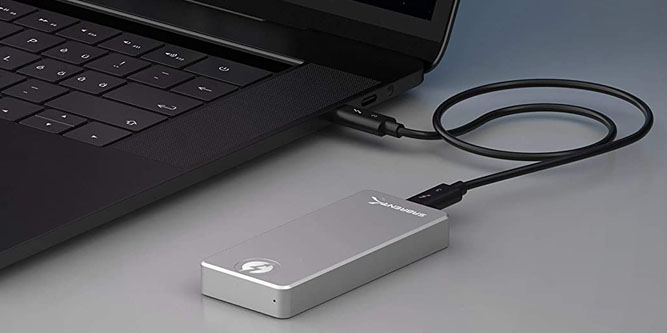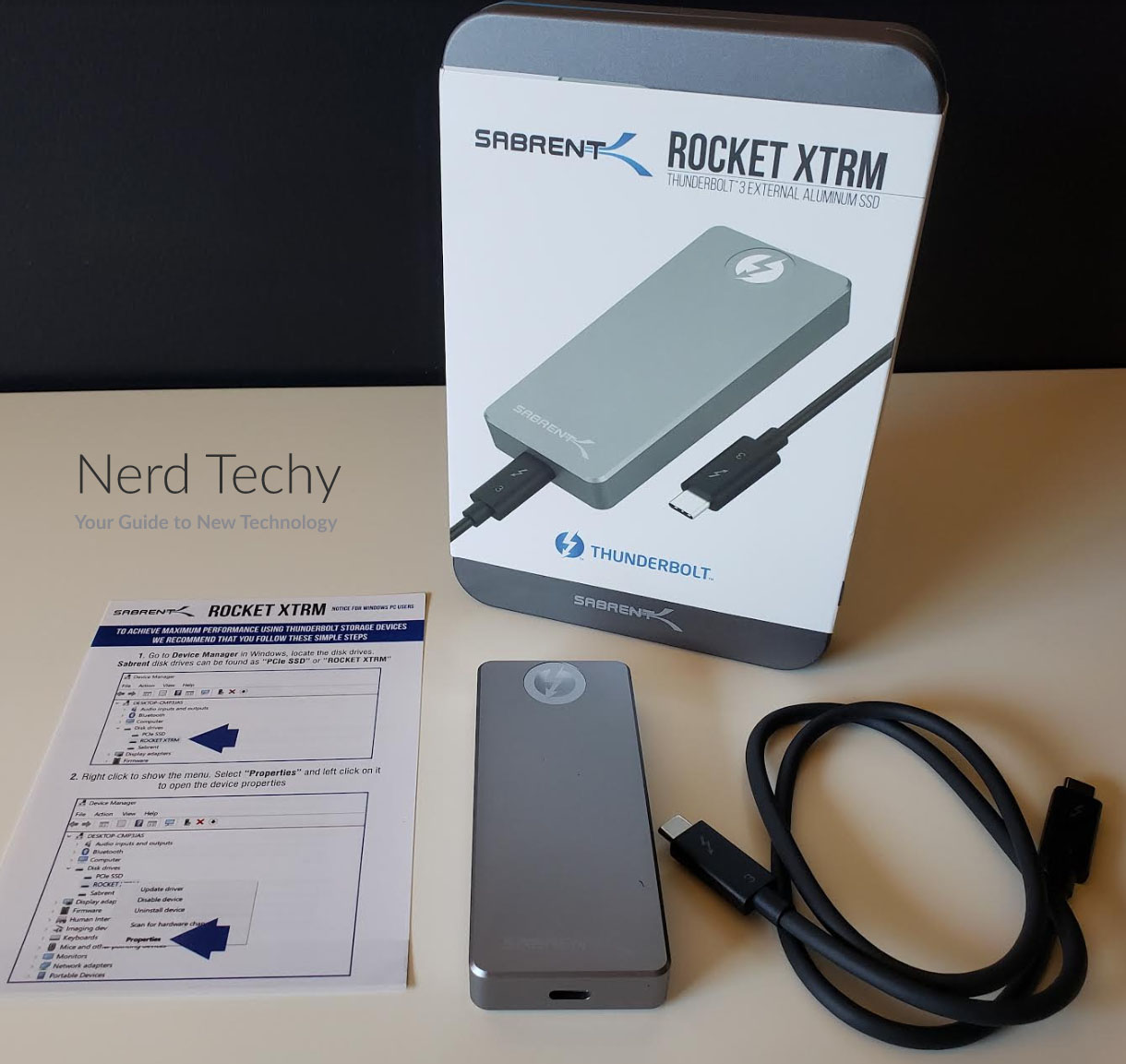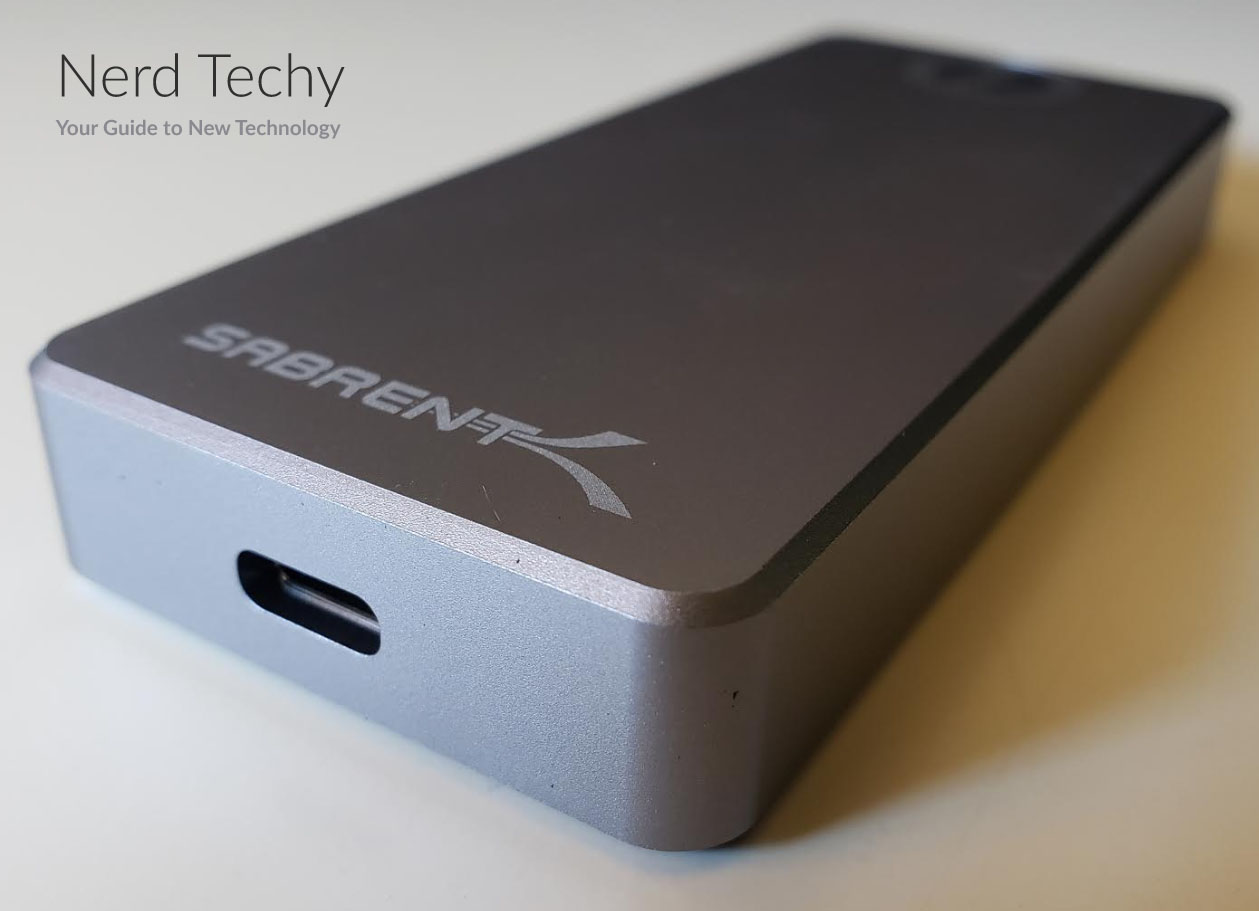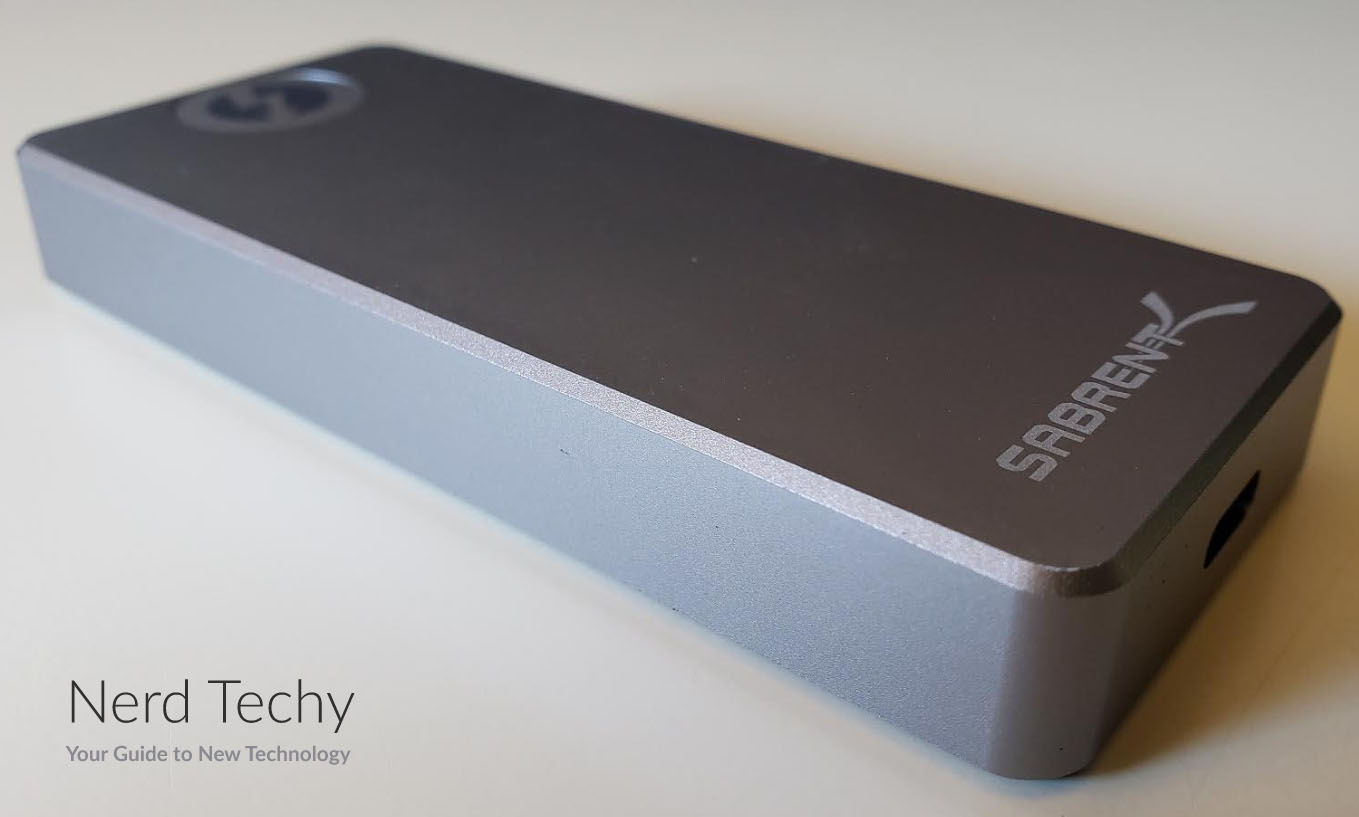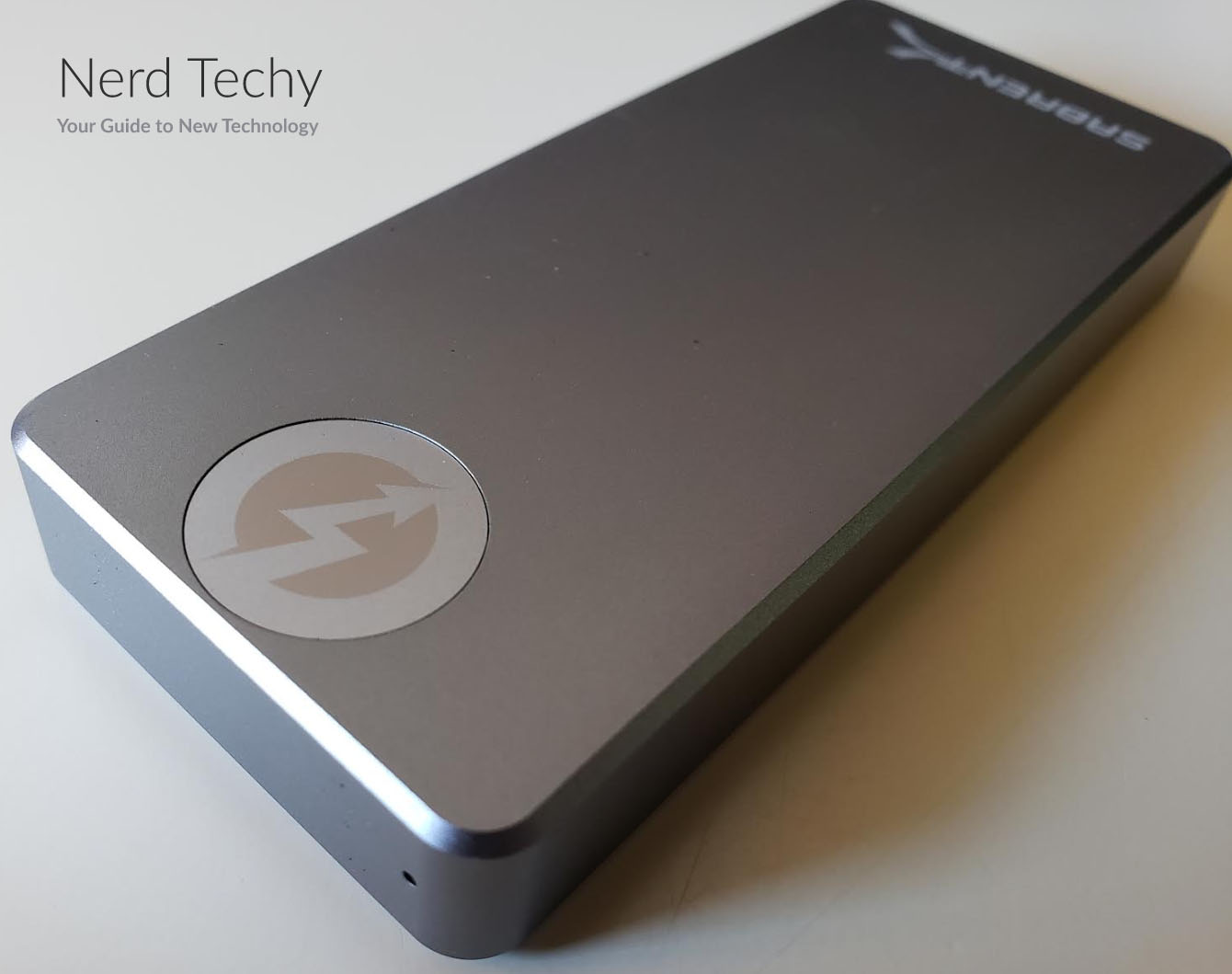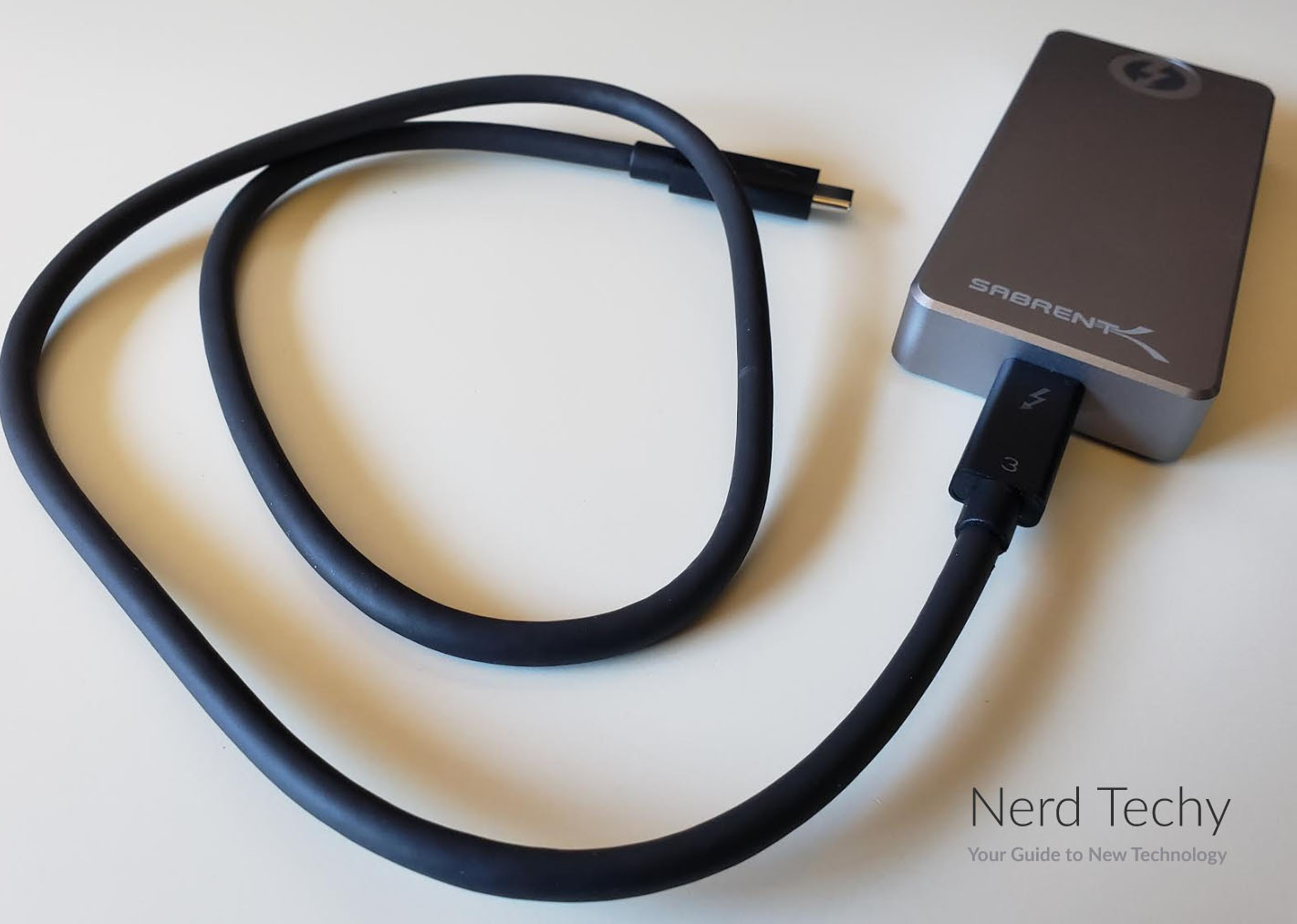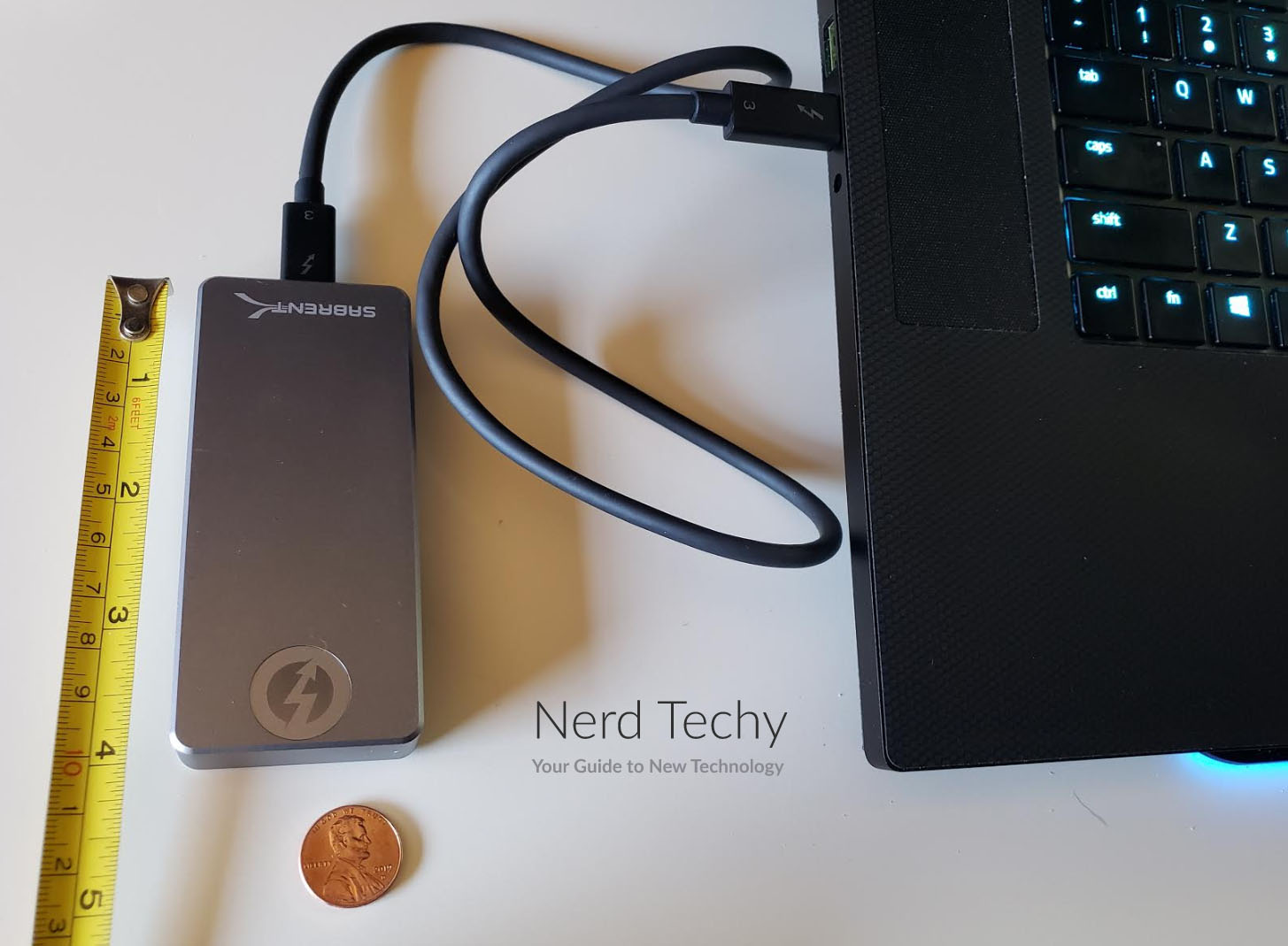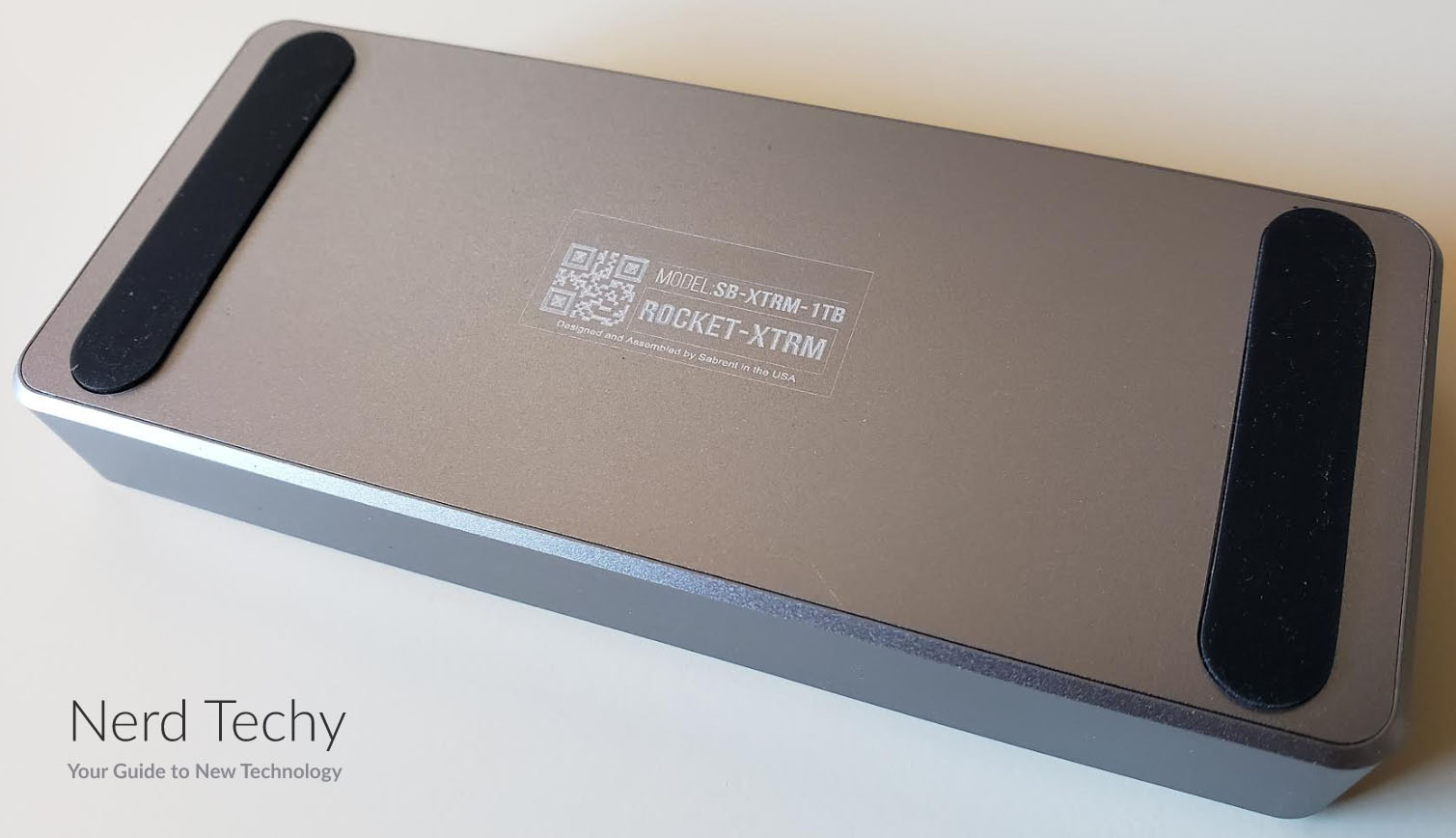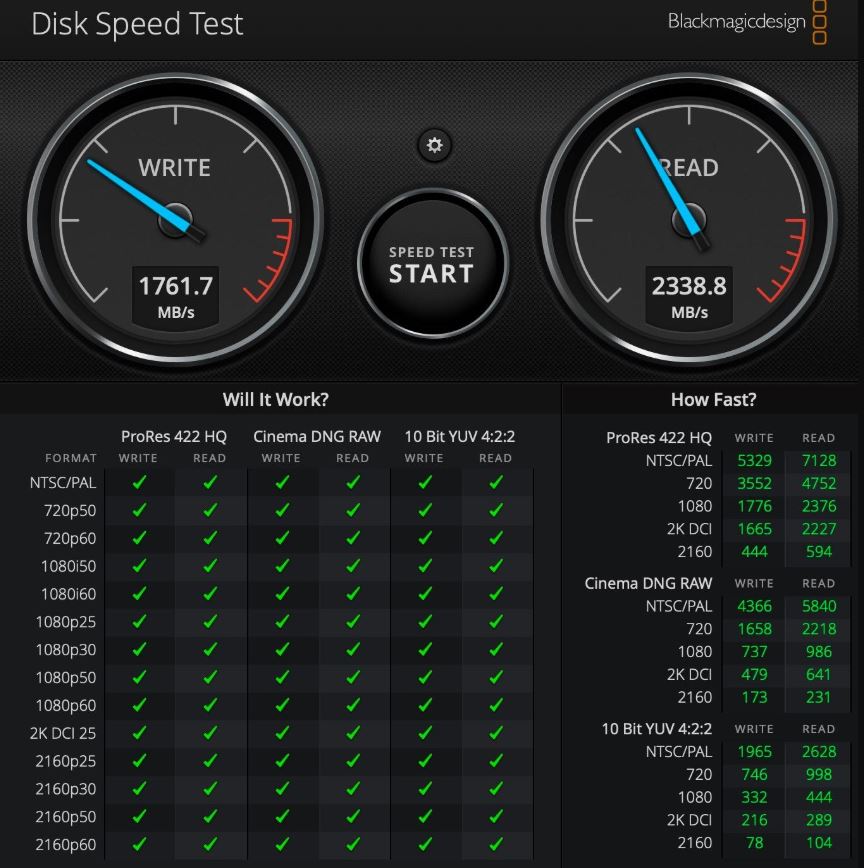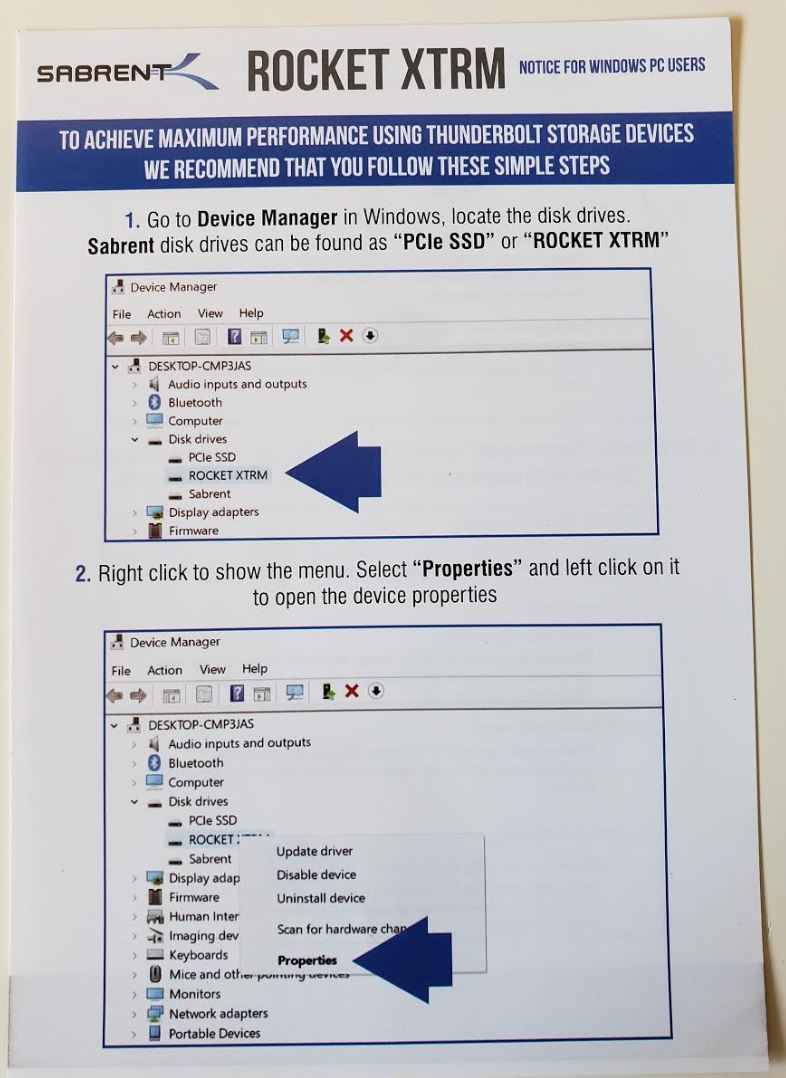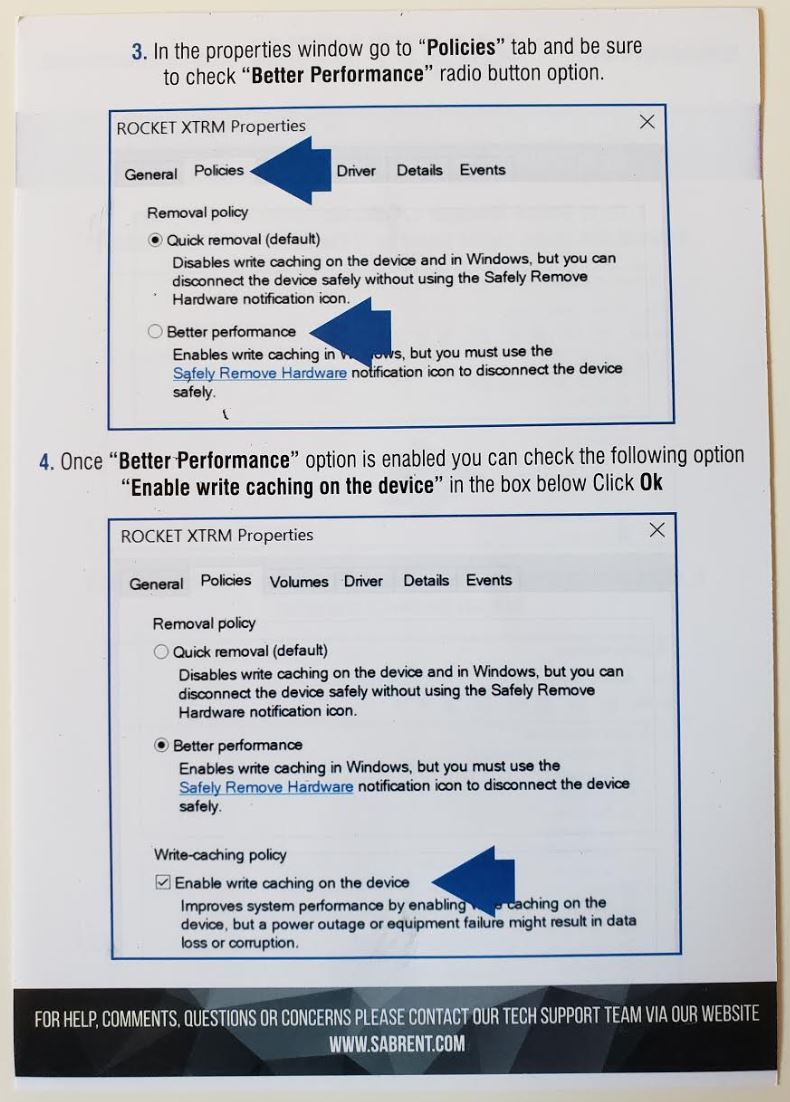If you need more storage capacity for your computer, you have a couple of options. First, you could add internal storage. If you’re a hobbyist who’s comfortable modifying a desktop PC, this is easy to do. But if you’re uncomfortable with this, or if you want to expand a laptop, you’ll need an external drive. An external drive also has a couple of other advantages. For one thing, it’s portable. You can unplug an external drive, throw it in your bag, and take it to work or your friend’s house. For another thing, external drives can be used with a wider variety of systems. You can plug one into your smartphone, or even into most modern game consoles. You just don’t get that kind of flexibility with an internal drive.
But how do you choose a quality external drive? After all, some are better than others. One way is to go with a reliable manufacturer. Sabrent hasn’t been around as long as Seagate or some others, but they’ve already built a reputation for quality. So, we decided to review the Sabrent Rocket XTRM 1TB Thunderbolt 3 External SSD. This is a fast, powerful external drive that’s ideal for people who need the best possible read/write speeds. But what else does it have to offer? And how well-engineered is it? We’re going to take a close look at this drive, and tell you everything we’ve learned. Let’s take a deeper dive!
Why Use an SSD?
You’ve probably heard the term “solid state drive” (SSD) thrown around a lot in recent years. Most modern PCs even come with one pre-installed. But what’s so special about an SSD? Isn’t it just a different type of hard drive? In fact, it’s a significantly better technology for most purposes. As a matter of fact, an SSD is wildly different from an old-school hard disk drive, or HDD.
HDD technology was invented by IBM way back in 1957, when they debuted the IBM 350. This machine was state of the art for the time, with a capacity of 3.75MB. That’s enough for a short MP3 file. And it took up as much space as two refrigerators. Now, obviously HDD technology has come a long way since that time. You can store literally millions of times as much data in a box the size of a paperback novel. But the underlying principle remains the same. Data is stored magnetically on a rotating disc. As the disc spins, a magnetic needle can either read the data or overwrite it as needed. The problem with HDD technology is that it’s more or less at its mechanical limit. It’s simply not possible to spin a disc any faster than we’re spinning them today. This will require developments in bearings and lubrication that aren’t happening any time soon.
So what does an SSD do differently? It works through quantum tunneling, which is a can of worms we’re not going to open in this review. But the main takeaway here is that there are no mechanical parts. You can read and write data at the speed of light. The only limitation is the your processor and, more importantly, the connection cable and port. The absence of mechanical parts also means that SSDs can be more shock-resistant than HDDs. The only serious downside of SSDs is that they need to be powered up regularly, or they’ll randomly lose data. If you want a drive that’s going to sit in storage for a year or more, choose an HDD. Otherwise, SSDs are the way of the future. Now, let’s see what the Rocket XTRM has to offer!
Design & Construction
The Sabrent Rocket XTRM 1TB Thunderbolt 3 External SSD is built like a brick. The case is constructed from anodized aluminum, which is designed to take a beating. The case has an attractive, powder-coated finish, and is available in silver or black. The silver version is the newer version, but in practice, they’re mostly the same. The only significant difference is that the black version has a built-in dongle for connectivity. The silver version comes with a Thunderbolt 3 cable that can be replaced as needed. This makes it more resilient, in the event that there’s any damage to the cable. It’s also a slightly longer than the dongle on the black version, which makes connections easier. There are other, less significant differences between the two designs. But for the purposes of this review, we’re focusing on the new version.
The case itself measures 4.1 inches long, 1.8 inches wide, and 0.6 inches thick. This makes for a small, pocket-friendly form factor that’s easy to carry around. With a total weight of only 11.2 ounces, it’s lighter than most smartphones. The top of the case has a white Sabrent logo on one end, and a matching Thunderbolt 3 on the other end. The edges are beveled and the corners are slightly curved. This means there are no sharp edges or corners to stab you while you’re carrying it. On the end of the case with the Sabrent logo, you’ll find a single Thunderbolt 3 port. On the bottom, there are a pair of black rubber skids. These protect your desk from scratching, and keep the Rocket XTRM from sliding around while you’re using it.
The Sabrent Rocket XTRM is a tough SSD. But it’s not what you’d call “tactical” or “military grade”. If you drop it down a flight of stairs, there’s a good chance that it’s going to get damaged. If you need the toughest possible drive, check out our guide to the best military grade portable SSDs. Those drives are the toughest around, whether you want to go camping or you’re just hard on your equipment.
Capacity & Speed
Now we know how the Sabrent Rocket XTRM is built. But how well does it actually perform. As the name of this review implies, we reviewed the 1TB version. For most purposes, the 1TB drive will be right for most people. It offers a large amount of storage at a reasonable price point. But we should point out that there are also 500GB, 2TB, and 4TB variants available. Depending on your needs, one of these options might be your best choice.
Regardless of the storage capacity you choose, you’ll get blazing-fast read and write speeds. You’re looking at 2,400MB per second, both for reading and writing. What does this work out to in practice? It means you can transfer a full-length (compressed) 4K movie in about 2 seconds. Even if the video is completely uncompressed, you can transfer hours of footage in under a minute. If you’re using the drive for simple data backup, your performance will be absolutely fantastic. You can theoretically back up a full 1TB hard drive in about 15 minutes. Keep in mind that this will depend on the performance of your internal drive. If you’re copying an HDD, you’ll effectively be limited to the read speed of that HDD. But if you’re copying an internal SATA-connected SSD, you’ll get ultra-fast copying.
Because of this incredible transfer speed, the Rocket XTRM is an excellent choice for content creators. Transferring hours and hours of video? No problem! Uncompressed audio? No worries! This also makes the Rocket XTRM an excellent choice if you’re setting up a home media server. Many other drives can’t handle 4K streaming. But the Rocket XTRM is more than up to the task.
One thing we should point out is that the “heat dissipating design” Sabrent advertises doesn’t actually dissipate much heat. During normal operation, this isn’t noticeable. But if you’re backing up an entire hard drive, the Rocket XTRM gets hot. Set it on your desk or a table during these types of operations. If you leave it sitting in your lap, it’s going to hurt!
Connectivity & Compatibility
The Sabrent Rocket XTRM connects via either Thunderbolt 3 or a USB Type-C cable. If you want to use one of your existing cables or an aftermarket cable, you won’t have any issues. That said, the Rocket XTRM requires a Thunderbolt 3 port for operation. So go ahead and use your existing cable, but don’t use a USB Type-C port. Regardless of the type of cable you use, there’s no external power supply required.
The Rocket XTRM can be used with any Mac OS machine running Sierra or later. You can also use it with Windows machines running Windows 7, 8.1, or 10. Be aware, though, that Bootcamp is not supported. If you’re running Windows on an Apple machine, or Apple drivers on a Windows machine, the Rocket XTRM won’t work.
Many pre-built PCs don’t have Thunderbolt 3 ports. Unless you built your own – or bought a specialized PC – you won’t be able to use the Rocket XTRM. In this case, consider the Sabrent Rocket Nano External Aluminum SSD. This drive connects via a standard USB Type-C port. That said, it offers correspondingly slower read and write speeds.
Final Verdict
So, is the Sabrent Rocket XTRM 1TB Thunderbolt 3 External SSD worth the investment? Provided you have a computer with a Thunderbolt 3 port, it’s worth its weight in gold. To begin with, look at the transfer speeds. You’re looking at some of the fastest read/write capability on the market. If you regularly work with large files, you’ll be very pleased with the performance. On the same note, the Rocket XTRM is a great choice for backups. You won’t have to wait around all day for your files to transfer.
In addition, the overall construction is very well-engineered. The aluminum case is tough and rugged. It might not be tactical-grade, but it’s more than durable enough for most purposes. The beveled edges and rounded corners make it easy to carry and easy to use. And the rubber pads on the bottom ensure that it won’t damage your desk or table. If you’re looking for a fast external drive with plenty of capacity, the Rocket XTRM is an excellent choice.
Meet Ry, “TechGuru,” a 36-year-old technology enthusiast with a deep passion for tech innovations. With extensive experience, he specializes in gaming hardware and software, and has expertise in gadgets, custom PCs, and audio.
Besides writing about tech and reviewing new products, he enjoys traveling, hiking, and photography. Committed to keeping up with the latest industry trends, he aims to guide readers in making informed tech decisions.

